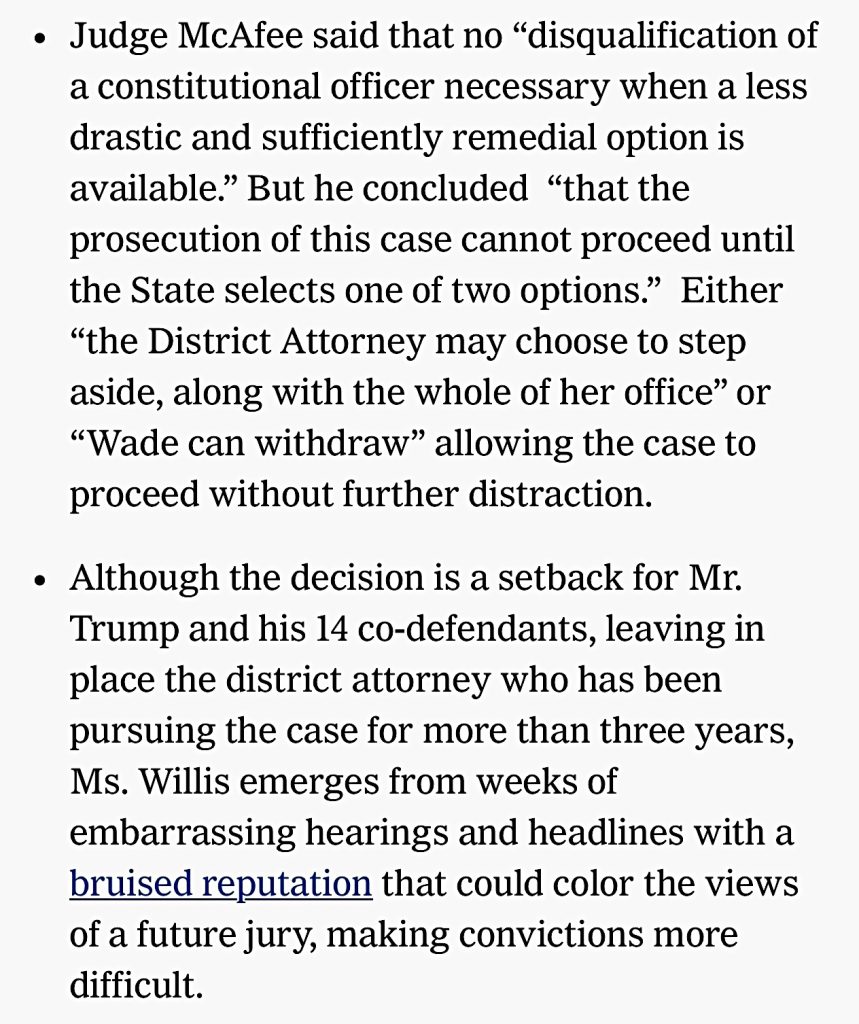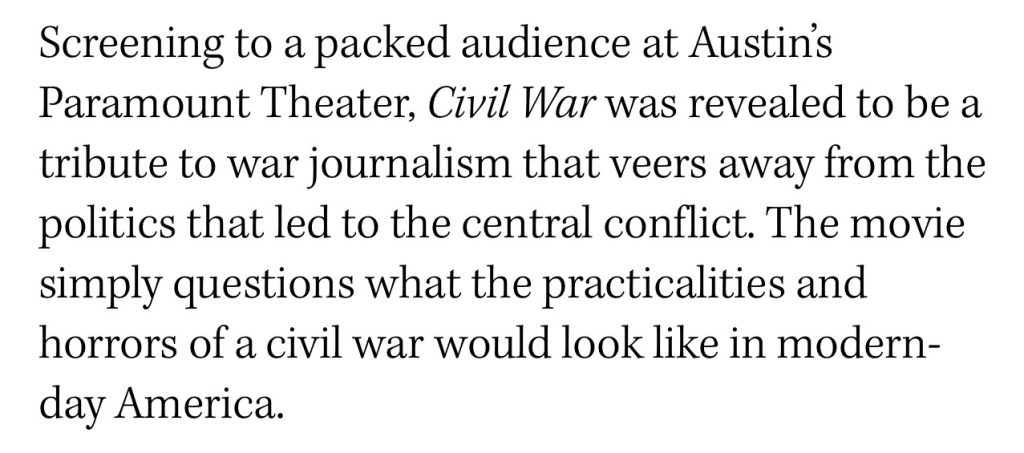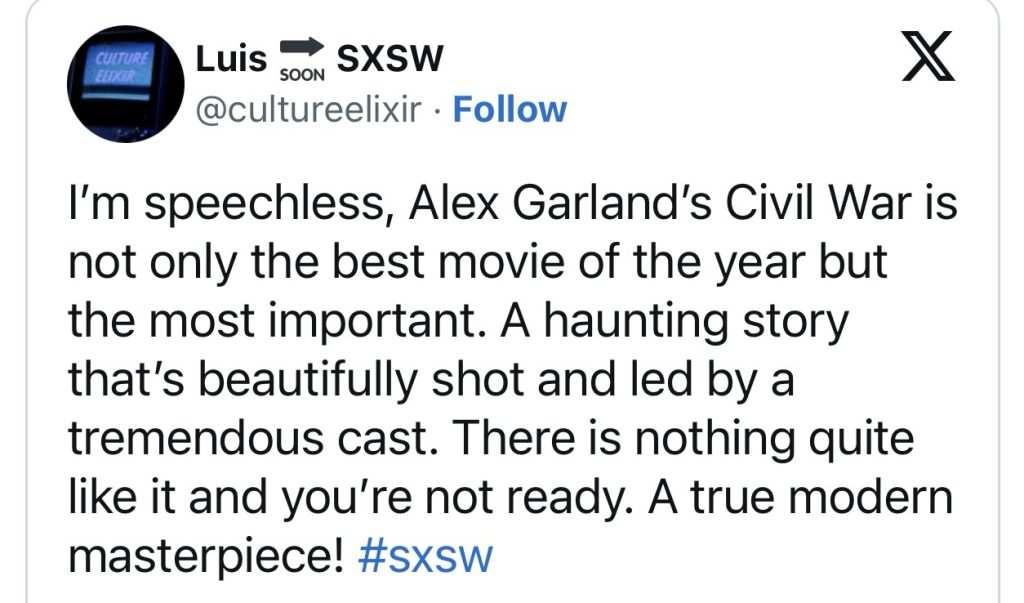A pair of Oscar weekend dust-ups happened last Saturday night (3.9).
The first, reported by Puck‘s Matthew Belloni, occured at Chanel’s 15th pre-Oscar awards dinner at the Beverly Hills Hotel, and involved director David O. Russell and Sanford Panitch, president of Sony Motion Picture Group.
Panitch reportedly tripped over Russell’s crouching or otherwise outstretched leg, which reportedly prompted the hot-tempered Russell to stand up and punch Panitch “hard” in the gut. Except Panitch’s response, according to Belloni, was to “laugh and move on” after realizing who his assailant was.
But how “hard” could that punch have been if Panitch basically shrugged it off? If someone had gone into Sonny Liston mode and slugged me in the solar plexus I would have said “whuoouhff!” and then “what the fuck, dude…it was an accident.” Panitch didn’t even do that — he went “hah-hah!” or maybe “hoo-hah!” and went on his way. Doesn’t add up. Belloni was almost certainly exaggerating.
I tried to get the skinny from one of the horse’s mouths before tapping this out…silencio.
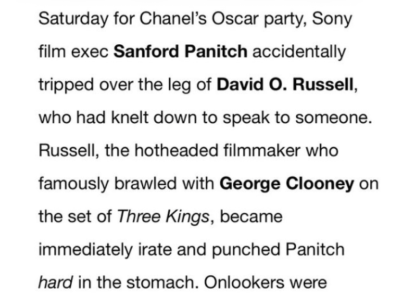
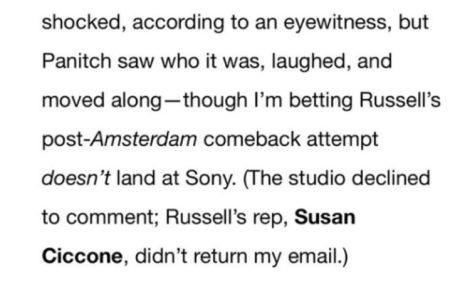
Dust-up #2, reported by THR‘s Kim Masters and Lesley Goldberg, was about Bill Maher firing CAA, which had repped him for 20 years, when they failed to wangle Maher an invite to an elite Saturday night Oscar party thrown by CAA co-chairman Bryan Lourd.
Alas, few tasty details have been offered by Masters and Goldberg. Did Maher ask his CAA agent (Steven Lafferty) to get him into the Lourd party a day or two earlier, or did he get pissy about it after hearing about the party the next day? Did he show up at the party under an assumption that he was on the guest list, only to be turned down at the door? These are important things to pass along or at least clarify one way or the other. Maher canned CAA on Monday, or roughly 48 hours later.




